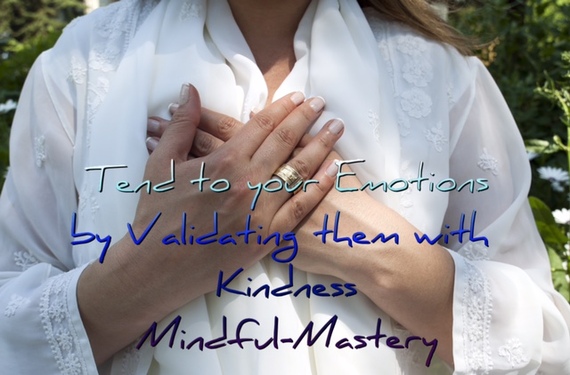Lara Fielding Clinical psychologist, emphasizing the promotion of stress resilience and emotion regulation through mindfulness skills training.
Well-Being is a Practice
FACT: Emotional well-being is NOT the human default mode. We may stumble upon moments of equilibrium when there are few or no challenges in the environment. But, most of the time, and certainly if you want to do something interesting with your life, there will be stress and challenges.
That said, it is not easy to regulate our emotional reactions to stress, in a healthy and balanced way. Humans are hardwired to fall into auto-pilot habits of coping with stress, which can fuel anxiety and moodiness. Sometimes we tend towards passive coping (e.g. avoidance, self-soothing, or pleasure seeking). Other times, we are more prone towards active coping (e.g. busyness, perfectionism, and pushing ourselves). The problem is, it’s easy to get stuck if we allow ourselves to slip too far into a particular mode or another.
It seems most of us assume that balance and emotion regulation “should” just happen effortlessly, magically. The truth is, we become what we practice every day. So if we get stuck in habitual extremes and imbalance – that will be reflected in our reality. The emotional well-being and balance we all seek requires a fair degree of skillfulness. The more stress we experience, the more skillful we will have to be. So, if we truly want well-being to become second nature, as with any skill, it will require PRACTICE – PRACTICE – PRACTICE.
We become what we practice every day. So if we get stuck in habitual extremes and imbalance – that will be reflected in our reality. The emotional well-being and balance we all seek requires a fair degree of skillfulness.
Every day I teach clients skills for coping with stress and balancing emotions. But even with repeated review and practice, strong emotions make it tough to remember the steps. So, I have created this cheat sheet for practicing ‘Just 3 Things’ for mindful coping with stress.
The cheat sheet includes three phases, each with three steps for moving into more balanced and healthy emotion regulation. These skills build upon one another. So they are best practiced sequentially. Work on mastering the first ones, before proceeding to the next. Each ‘phase’ is organized according to how to work with your emotions, thoughts, and actions. Each piece of experience requires a different type of skill. You may refer back to my previous blogs to learn more about these differences and how each influences the other.
If you practice these steps daily, or throughout the day, you can learn to prevent emotions from getting out of hand. As you develop your skillfulness, you will build your mastery, and thus be more effective pursuing your dreams and goals!
EMOTION REGULATION CHEAT SHEET
1. ASSESS the elements of your experience:
A. ACTIONS: STOP doing whatever you are doing, so that you may MINDFULLYreflect on your own experience
B. EMOTIONS: LABEL the emotion you are experiencing in the moment.
a. Find the one word label: such as anger, frustration, sadness, disappointment, fear, anxiety.
C. THOUGHTS: IDENTIFY what type of thought trap(s) might be fueling this emotion?
a. All or None: Key words include; ‘always,’ ‘never,’ ‘completely’
b. Judgmental: Keywords: ‘shouldn’t,’ ‘should,’ ‘bad,’ ‘not fair,’ etc.
c. Catastrophizing: Assuming the absolute worst
d. Mind Reading: Assuming you know the contents of someone else’s mind
f. Time Traveling: Ruminating or worrying
2. VALIDATE your experience:
A. ACTIONS: PACED BREATHING: Inhale, expanding the belly, for a count of 3; Exhale, contracting the belly, for a count of 5. Repeat 6 times
B. EMOTIONS: Practice KIND – NON JUDGMENTAL- COMPASSION towards yourself for having the emotion. VALIDATE your emotion: Say to yourself “It makes sense that I am having this emotion, based on….”
a. My history
b. Anyone would feel this way in the same situation
c. My current biological disposition (e.g. poor sleep, PMS, recent substance use, physical health, other stressors)
C. THOUGHTS: Are you caught in a ‘thinking habit?” REDIRECT ATTENTION to the present moment using Breadth, Body, Sound.
a. Move attention to the physical sensations of breathing.
b. Next, scan the physical sensations in your body; feel yourself inside your skin suit
c. Listen- attend to the sounds around you
3. REGULATE your reaction:
A. ACTIONS: Identify and take the action OPPOSITE to the action tendency of the emotion. NOTE: Only if the emotion is extreme or has little chance of actually being justified (See a short video on purpose of emotions here).
a. Anger → Gently avoid, and then practice compassion towards person or situation.
b. Sadness → Get up, get moving, get active! Go for a workout, be social.
c. Fear/Anxiety → Move toward the source of the fear, over and over again!
d. Shame → Share, discuss, out yourself
B. EMOTIONS: Develop a better relationship with your emotion. Practice WILLINGNESS to have the emotion you are having in the moment. This will help it to pass naturally, rather than remain stuck.
a. Repeat the MANTRA “I am willing to have this feeling of______ In just this moment.”
C. THOUGHTS: Check your thoughts for accuracy. Are your thoughts 100% true? Seek to find an ALTERNATIVE INTERPRETATION of the facts, which is…
a Less all or none
b. Non-judgmental
c. Based on the facts in the present moment (not past or future thoughts)
d. Believable to you!
Follow Lara Fielding on Twitter: www.twitter.com/mindful_masteryCopyright ©2015 TheHuffingtonPost.com, Inc. “The Huffington Post” is a registered trademark of TheHuffingtonPost.com, Inc. All rights reserved. 2015© Part of HuffPost Healthy Living
